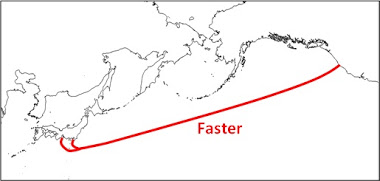Google, NEC, others map out plans for trans-Pacific cable system


While Google Fiber is known for honing in for deployment in smaller metropolitan areas, Google's latest networking endeavour is set to span between continents.
The internet giant is teaming up with IT network and communications provider NEC, among others, to establish a consortium for the purpose of building and deploying a Trans-Pacific cable system.
With the code name "FASTER," the goal of the project is fairly clear cut, aiming to meeting ever-rising data demands from broadband and mobile apps for both consumer and enterprise purposes.
Urs Hölzle, senior vice president of technical infrastructure for the Google Cloud Platform, explained on his Google+ page on Monday how this project plays into the broader goal (at least for Mountain View) of serving its Android user base of more than one billion worldwide and counting.
"And sometimes the fastest path requires going through an ocean," Hölzle said simply.
Woohyong Choi, chairman of the FASTER executive committee, added in the announcement that FASTER will be one of a few hundred submarine telecommunications cables connecting various parts of the world upon completion.
"The FASTER cable system has the largest design capacity ever built on the Trans-Pacific route, which is one of the longest routes in the world," Choi continued. "The agreement announced today will benefit all users of the global internet.”
The technical design calls for a high-quality 6-fiber-pair cable supporting optical transmission technologies and an initial capacity of 60Tb/s (100Gb/s x 100 wavelengths x 6 fiber-pairs).
On a geographic basis, the FASTER cable network is going to be set up with hubs along the US West Coast around the Los Angeles, San Francisco, Portland and Seattle areas. On the other side of the Pacific, there will be two landing locations in Japan, facilitating connections to neighboring cable systems across Asia.
Estimated to be worth approximately $300 million at this time, the rest of the consortium is rounded out by China Mobile International, China Telecom Global, Global Transit, KDDI and SingTel.
But the design and rhetoric are already much more than just words, goals, and dreams.
Construction is scheduled to start immediately with a launch date projected for the second quarter of 2016. NEC will be the primary system supplier.
Image via Urs Hölzle/Google+/NEC